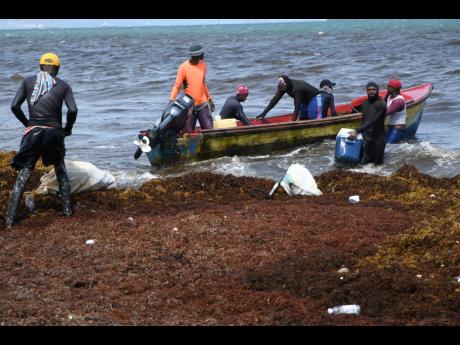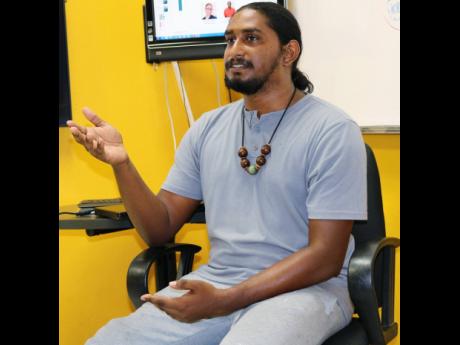Sargassum finds favour with some fishers
“Most of the fishers interviewed actually liked floating sargassum because it attracts a lot of fish species like dolphin or mahimahi which fetch a high price. So a lot of the fishermen have a favourable impression of sargassum,” Romario Anderson, research officer at the Mona GeoInformatics Institute, told The Sunday Gleaner.
Anderson and his team at the University of the West Indies, Mona-based institute have been working on an early advisory system for Jamaica, to forecast the frequency, volume and where sargassum is likely to be deposited on its beaches.
This finding caught the research team off guard, given the many negatives associated with sargassum deposits but as he explained, it is dependent on the fishing methodology employed.
“If you usually do trawling where your equipment can get entangled, then that’s a problem,” Anderson said.
There is therefore a distinct difference in terms of the impact of floating sargassum and beach sargassum which is when it is deposited on land.
The goal of the early advisory system is to analyse data from satellite imagery, fieldwork, secondary sources and drones to produce a dynamic system that incorporates wind and wave conditions in the predictions of sargassum beaching alerts across Jamaica.
From this information near real-time alerts will be generated for the location of nearshore, offshore and beached sargassum for different sections of the coastline. It will also provide alerts specific to various communities and sectors based on their vulnerability and interests in sargassum, with the objective to improve the resiliency and the potential for utilising the seaweed as a means of transformational adaptation.
The system will provide specific information for different stakeholders, given that beach sargassum is the main risk and can affect fishing equipment, resulting in boat engine entanglement, reduction in fish species, equipment damage like lines getting entangled, lures being lost and difficulties in launching or landing boats.
An anticipated benefit of the system is that it will allow for stakeholders to make plans on how to cope with the sargassum deposits, in that fishers, for example, will know when and where the sargassum will end up.
“That will help them, as one of the biggest problems with beach sargassum is in landing as well as launching boats, so they will know when and how to position their boats on the beach,” noted Anderson.
GEOMORPHOLOGICAL FACTORS OF BEACHES
He also disclosed that much work has gone into looking at the geomorphological factors of beaches which relate to their formation and the presence of bays and coves.
“We have information on that and are about to publish a paper on it, so we find that the more curved coastlines are, they are more prone to sargassum beaching as well as coastlines with the presence of bays and coves because it captures sargassum. Coastlines with a north or north-eastern orientation, based on the currents, are more likely to receive sargassum beaching,” the young scientist explained.
There is significant interest in manufacturing fertiliser from sargassum but Jamaica is behind in that area and there are also attendant risks, Anderson explained.
“It’s been shown that in terms of the heavy metal content including arsenic, it is higher than the safety threshold so in terms of applications for food and agriculture, it is not effective but we are seeing it now being used in Barbados where they are exporting it for use as fertiliser on golf courses and it’s been shown that it’s very effective. So there is a lot of work being done in that area,” he said.
“What we have seen during our monitoring activities is peak season between April and August, with the most severe months being May to June. What used to happen is that by October we used to see sargassum beaching completely gone but now even in December it is there. So it is like the sargassum season is a year-round thing and it is very difficult to combat it.”



